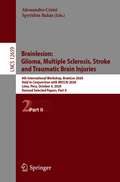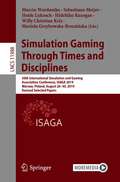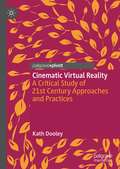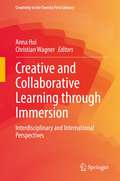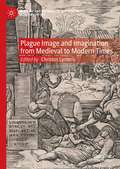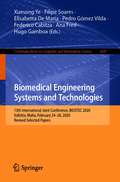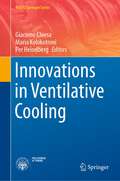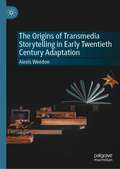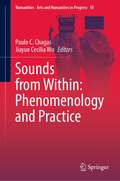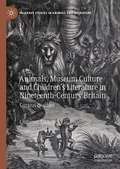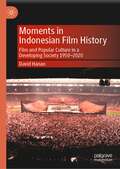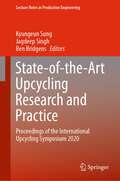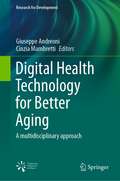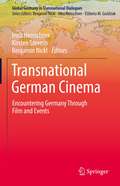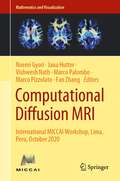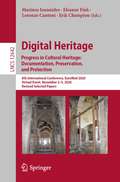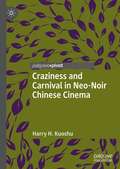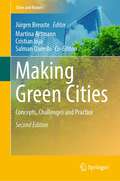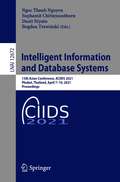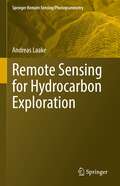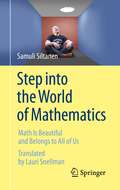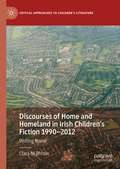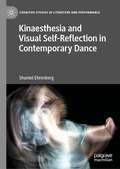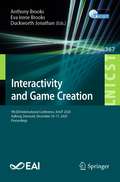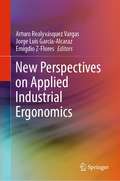- Table View
- List View
Brainlesion: 6th International Workshop, BrainLes 2020, Held in Conjunction with MICCAI 2020, Lima, Peru, October 4, 2020, Revised Selected Papers, Part II (Lecture Notes in Computer Science #12659)
by Alessandro Crimi Spyridon BakasThis two-volume set LNCS 12658 and 12659 constitutes the thoroughly refereed proceedings of the 6th International MICCAI Brainlesion Workshop, BrainLes 2020, the International Multimodal Brain Tumor Segmentation (BraTS) challenge, and the Computational Precision Medicine: Radiology-Pathology Challenge on Brain Tumor Classification (CPM-RadPath) challenge. These were held jointly at the 23rd Medical Image Computing for Computer Assisted Intervention Conference, MICCAI 2020, in Lima, Peru, in October 2020.* The revised selected papers presented in these volumes were organized in the following topical sections: brain lesion image analysis (16 selected papers from 21 submissions); brain tumor image segmentation (69 selected papers from 75 submissions); and computational precision medicine: radiology-pathology challenge on brain tumor classification (6 selected papers from 6 submissions). *The workshop and challenges were held virtually.
Simulation Gaming Through Times and Disciplines: 50th International Simulation and Gaming Association Conference, ISAGA 2019, Warsaw, Poland, August 26–30, 2019, Revised Selected Papers (Lecture Notes in Computer Science #11988)
by Marcin Wardaszko Sebastiaan Meijer Heide Lukosch Hidehiko Kanegae Willy Christian Kriz Mariola Grzybowska-BrzezińskaThis book constitutes revised selected papers from the 50th International Simulation and Gaming Association Conference, ISAGA 2019, which took place in Warsaw, Poland, during August 26–30, 2019.The 38 papers presented in this volume were carefully reviewed and selected from 72 submissions. They were organized in topical sections named: simulation gaming in the science space; simulation gaming design and implementation; simulation games for current challenges; simulation games and gamification; and board perspective on simulation gaming.
Cinematic Virtual Reality: A Critical Study of 21st Century Approaches and Practices
by Kath DooleyWith reference to traditional film theory and frameworks drawn from fields such as screenwriting studies and anthropology, this book explores the challenges and opportunities for both practitioners and viewers offered by the 360-degree storytelling form. It focuses on cinematic virtual reality (CVR), a format that involves immersive, high quality, live action or computer-generated imagery (CGI) that can be viewed through head mounted display (HMD) goggles or via online platforms such as YouTube. This format has surged in popularity in recent years due to the release of affordable high quality omnidirectional (360-degree) cameras and consumer grade HMDs. The book interrogates four key concepts for this emerging medium: immersion, presence, embodiment and proximity through an analysis of innovative case studies and with reference to practitioner interviews. In doing so, it highlights the specificity of the format and provides a critical account of practitioner approaches to the concept development, writing and realisation of short narrative CVR works. The book concludes with an account of the author’s practice-led research into the form, providing a valuable example of creative practice in the field of immersive media.
Creative and Collaborative Learning through Immersion: Interdisciplinary and International Perspectives (Creativity in the Twenty First Century)
by Anna Hui Christian WagnerThis book includes instructional design and practice of how immersive technology is integrated in discipline-based and interdisciplinary curriculum design. It focuses on pedagogical models and learning outcomes of immersive learning experiences and demonstrates how immersive learning can be applied in industries. This book brings scholars, researchers and educators together around an international and interdisciplinary consolidation and reflection on learning through immersion. The originality lies in how advanced technology and contemporary pedagogical models can integrate to enhance student engagement and learning effectiveness in higher education.
Plague Image and Imagination from Medieval to Modern Times (Medicine and Biomedical Sciences in Modern History)
by Christos LynterisThis edited collection brings together new research by world-leading historians and anthropologists to examine the interaction between images of plague in different temporal and spatial contexts, and the imagination of the disease from the Middle Ages to today. The chapters in this book illuminate to what extent the image of plague has not simply reflected, but also impacted the way in which the disease is experienced in different historical periods. The book asks what is the contribution of the entanglement between epidemic image and imagination to the persistence of plague as a category of human suffering across so many centuries, in spite of profound shifts in our medical understanding of the disease. What is it that makes plague such a visually charismatic subject? And why is the medical, religious and lay imagination of plague so consistently determined by the visual register? In answering these questions, this volume takes the study of plague images beyond its usual, art-historical framework, so as to examine them and their relation to the imagination of plague from medical, historical, visual anthropological, and postcolonial perspectives.
Biomedical Engineering Systems and Technologies: 13th International Joint Conference, BIOSTEC 2020, Valletta, Malta, February 24–26, 2020, Revised Selected Papers (Communications in Computer and Information Science #1400)
by Xuesong Ye Filipe Soares Elisabetta De Maria Pedro Gómez Vilda Federico Cabitza Ana Fred Hugo GamboaThis book constitutes extended and revised versions of the selected papers from the 13th International Joint Conference on Biomedical Engineering Systems and Technologies, BIOSTEC 2020, held in Valletta, Malta, in February 2020.The 29 revised and extended full papers presented were carefully reviewed and selected from a total of 363 submissions. The papers are organized in topical sections on biomedical electronics and devices; bioimaging; bioinformatics models, methods and algorithms; bio-inspired systems and signal processing; health informatic
Innovations in Ventilative Cooling (PoliTO Springer Series)
by Giacomo Chiesa Maria Kolokotroni Per HeiselbergThis book includes the most recent outcomes from research and professional practice in the ventilative cooling field, gathered by the selected panel of authors. It provides essential contents to face and reduce the rise of space cooling and ventilation energy uses in buildings by alternative ventilation and cooling solutions. The book is organised into three parts which include a detailed description of ventilative cooling boundaries and implications (working principles, KPIs, standards, comfort models, control techniques) and of principal techniques (night ventilation, controlled natural ventilation, hybrid solutions, PCM and mass activation, evaporative cooling, earth-to-air heat exchangers) along with an updated analysis of the background to the topic. Furthermore, the last part of the book defines a unique practical and theoretical framework to include ventilative cooling solutions in different building typologies along with their principal implications.
The Origins of Transmedia Storytelling in Early Twentieth Century Adaptation
by Alexis WeedonThis book explores the significance of professional writers and their role in developing British storytelling in the 1920s and 1930s, and their influence on the poetics of today’s transmedia storytelling. Modern techniques can be traced back to the early twentieth century when film, radio and television provided professional writers with new formats and revenue streams for their fiction. The book explores the contribution of four British authors, household names in their day, who adapted work for film, television and radio. Although celebrities between the wars, Clemence Dane, G.B. Stern, Hugh Walpole and A.E.W Mason have fallen from view. The popular playwright Dane, witty novelist Stern and raconteur Walpole have been marginalised for being German, Jewish, female or gay and Mason’s contribution to film has been overlooked also. It argues that these and other vocational authors should be reassessed for their contribution to new media forms of storytelling. The book makes a significant contribution in the fields of media studies, adaptation studies, and the literary middlebrow.
Sounds from Within: Phenomenology and Practice (Numanities - Arts and Humanities in Progress #18)
by Paulo C. Chagas Jiayue Cecilia WuThis book transforms phenomenology, music, technology, and the cultural arts from within. Gathering contributions by performing artists, media technology designers, nomadic composers, and distinguished musicological scholars, it explores a rich array of concepts such as embodiment, art and technology, mindfulness meditation, time and space in music, self and emptiness, as well as cultural heritage preservation. It does so via close studies on music phenomenology theory, works involving experimental music and technology, and related cultural and historical issues. This book will be of considerable interest to readers from the fields of sound studies, science and technology studies, phenomenology, cultural studies, media studies, and sound art theory. This book is equally relevant and insightful for musicians, composers, media artists, sound artists, technology designers, and curators and arts administrators from the performing and visual arts.
Animals, Museum Culture and Children’s Literature in Nineteenth-Century Britain: Curious Beasties (Palgrave Studies in Animals and Literature)
by Laurence TalairachAnimals, Museum Culture and Children’s Literature in Nineteenth-Century Britain: Curious Beasties explores the relationship between the zoological and palaeontological specimens brought back from around the world in the long nineteenth century—be they alive, stuffed or fossilised—and the development of children’s literature at this time. Children’s literature emerged as dizzying numbers of new species flooded into Britain with scientific expeditions, from giraffes and hippopotami to kangaroos, wombats, platypuses or sloths. As the book argues, late Georgian, Victorian and Edwardian children’s writers took part in the urge for mass education and presented the world and its curious creatures to children, often borrowing from their museum culture and its objects to map out that world. This original exploration illuminates how children’s literature dealt with the new ordering of the world, offering a unique viewpoint on the construction of science in the long nineteenth century.
Moments in Indonesian Film History: Film and Popular Culture in a Developing Society 1950–2020
by David HananThis book explores Indonesian cinema, focusing on moments of unique creativity by Indonesian film artists who illuminate important but less-widely-known aspects of their multi-dimensional society. It begins by exploring early 1950s ‘Indonesian neorealist films’ of the Perfini group, which depict the ethos and emerging moral issues of the period of struggle for independence (1945–49). It continues by discussing four audacious political allegories produced in four discrete political eras—including the Sukarno, Suharto and Reformasi periods. It also surveys the main approaches to Islam in both popular cinema and auteur films during the Suharto New Order. One chapter celebrates the popular songs and B-movies of the Betawi comedian, Benyamin S, which dramatize the experience of the poor in ‘modernizing’ Jakarta. Another examines persisting Third World dimensions of Indonesian society as critiqued in two experimental features. The concluding chapter highlights innovation in a renewed Indonesian cinema of the post-Suharto Reformasi period (1999–2020), including films by an unprecedented generation of women writer-directors
State-of-the-Art Upcycling Research and Practice: Proceedings of the International Upcycling Symposium 2020 (Lecture Notes in Production Engineering)
by Kyungeun Sung Jagdeep Singh Ben BridgensThis book presents the proceedings of the first International Upcycling Symposium 2020, held on 4th September 2020 at De Montfort University (DMU) in Leicester, UK (online), as a joint effort between DMU, Lund University, Nottingham Trent University and Newcastle University. This book presents state of the art of research and practice in “upcycling” at the international level.The subject of this book, upcycling, is a term to describe the processes of creating or modifying a product from used or waste materials, components and products, which is of equal or higher quality or value than the compositional elements. This book describes new theories, approaches and scientific research findings related to upcycling and presents examples of upcycling practice, across multiple sectors, scales and contexts. Bringing together research from over 35 multidisciplinary experts, the book discusses state-of-the-art knowledge and practices on upcycling in different geographical, economic, socio-cultural and technological contexts at an international level. Readers will gain fundamental understanding of upcycling with its varied definitions and forms across sectors and scales, and to be informed of the latest upcycling research and practices including valuable ideas, theories, projects, experiences and insights by global experts.
Digital Health Technology for Better Aging: A multidisciplinary approach (Research for Development)
by Giuseppe Andreoni Cinzia MambrettiThis book describes the multidisciplinary approach needed to tackle better aging. Aging populations are one of the 21st century’s biggest challenges. National health systems are forced to adapt in order to provide adequate and affordable care. Innovation, driven by digital technology, is a key to improving quality of life and encouraging healthy living. Well-designed technology keeps people empowered, independent, and mobile; however, despite widespread adoption of ICT in day-to-day life, digital health technologies have yet to catch on. To this end, technology needs to be effective, usable, cheap, and designed to ensure the security of the managed data. In the era of mHealth, mobile technology, and social design, this book describes, in six sections, the collaboration of polytechnic know-how and social science and health sectors in the creation of a system for encouraging people to engage in healthy behavior and achieve a better quality of life.
Transnational German Cinema: Encountering Germany Through Film and Events (Global Germany in Transnational Dialogues)
by Irina Herrschner Kirsten Stevens Benjamin NicklThis volume explores the notion of German cinema as both a national and increasingly transnational entity. It brings together chapters that analyse the international circuits of development and distribution that shape the emerging films as part of a contemporary “German cinema”, the events and spectacles that help frame and re-frame national cinemas and their discoverability, and the well-known filmmakers who sit at the vanguard of the contemporary canon. Thereby, it explores what we understand as German cinema today and the many points where this idea of national cinema can be interrogated, expanded and opened up to new readings. At the heart of this interrogation is a keen awareness of the technological, social, economic and cultural changes that have an impact on global cinemas more broadly: new distribution channels such as streaming platforms and online film festivals, and audience engagement that transcends national borders as well as the cinema space. International film production and financing further heightens the transnational aspects of cinema, a quality that is often neglected in marketing and branding of the filmic product. With particular focus on film festivals, this volume explores the tensions between the national and transnational in film, but also in the events that sit at the heart of global cinema culture. It includes contributions from filmmakers, cultural managers and other professionals in the field of film and cinema, as well as scholarly contributions from academics researching popular culture, film, and events in relation to Germany.
Computational Diffusion MRI: International MICCAI Workshop, Lima, Peru, October 2020 (Mathematics and Visualization)
by Noemi Gyori Jana Hutter Vishwesh Nath Marco Palombo Marco Pizzolato Fan ZhangThis book gathers papers presented at the Workshop on Computational Diffusion MRI, CDMRI 2020, held under the auspices of the International Conference on Medical Image Computing and Computer-Assisted Intervention (MICCAI), which took place virtually on October 8th, 2020, having originally been planned to take place in Lima, Peru.This book presents the latest developments in the highly active and rapidly growing field of diffusion MRI. While offering new perspectives on the most recent research challenges in the field, the selected articles also provide a valuable starting point for anyone interested in learning computational techniques for diffusion MRI. The book includes rigorous mathematical derivations, a large number of rich, full-colour visualizations, and clinically relevant results. As such, it is of interest to researchers and practitioners in the fields of computer science, MRI physics, and applied mathematics. The reader will find numerous contributions covering a broad range of topics, from the mathematical foundations of the diffusion process and signal generation to new computational methods and estimation techniques for the in-vivo recovery of microstructural and connectivity features, as well as diffusion-relaxometry and frontline applications in research and clinical practice.
Digital Heritage. Progress in Cultural Heritage: 8th International Conference, EuroMed 2020, Virtual Event, November 2–5, 2020, Revised Selected Papers (Lecture Notes in Computer Science #12642)
by Marinos Ioannides Eleanor Fink Lorenzo Cantoni Erik ChampionThis book constitutes the refereed post-conference proceedings of the 8th International Conference on Digital Heritage, EuroMed 2020, held virtually in November 2020.The 37 revised project papers and 30 revised short papers presented were carefully reviewed and selected from 326 submissions. The papers are on topics such as digital data acquisition technologies in CH/2D and 3D data capture methodologies and data processing; remote sensing for archaeology and cultural heritage management and monitoring; interactive environments and applications; reproduction techniques and rapid prototyping in CH; e-Libraries and e-Archives in cultural heritage; virtual museum applications (e-Museums and e-Exhibitions); visualisation techniques (desktop, virtual and augmented reality); storytelling and authoring tools; tools for education; 2D and 3D GIS in cultural heritage; and on-site and remotely sensed data collection.
Craziness and Carnival in Neo-Noir Chinese Cinema (Chinese Literature and Culture in the World)
by Harry H. KuoshuCraziness and Carnival in Neo-Noir Chinese Cinema offers an in-depth discussion of the “stone phenomenon” in Chinese film production and cinematic discourses triggered by the extraordinary success of the 2006 low-budget film, Crazy Stone. Surveying the nuanced implications of the film noir genre, Harry Kuoshu argues that global neo noir maintains a mediascape of references, borrowings, and re-workings and explores various social and cultural issues that constitute this Chinese episode of neo noir. Combining literary explorations of carnival, postmodernism, and post-socialism, Kuoshu advocates for neo noir as a cultural phenomenon that connects filmmakers, film critics, and film audiences rather than an industrial genre.
Making Green Cities: Concepts, Challenges and Practice (Cities and Nature)
by Jürgen Breuste Martina Artmann Cristian Ioja Salman QureshiThis book shows what role nature can play in a city and how this can make it a better place for people to live. People, planners, designers and politicians are working towards the development of green cities. Some cities are already promoted as green cities, while others are on their way to become one. But their goals are often unclear and can include different facets. Presenting contributions from world leading researchers in the field of urban ecology, the editors provide an interdisciplinary overview of best practices and challenges in creating green cities. They show examples of how to build up these cities from bits and pieces to districts and urban extensions. Each example concludes with a summary of the collected knowledge, the learning points and how this can be used in other places. The best practices are collected from around the world – Europe, America and Asia. Contributions cover a wide range of biophysical and cultural backgrounds within these three continents, including the Central, Southern and Eastern European region, as well as Latin and North America. The new dynamic urban development of Asia is illustrated by case studies from China and the Indian subcontinent. The reader will learn which role nature can play in green cities and what the basic requirements are in terms of culture, pre-existing nature conditions, existing urban surroundings, history, design and planning.
Intelligent Information and Database Systems: 13th Asian Conference, ACIIDS 2021, Phuket, Thailand, April 7–10, 2021, Proceedings (Lecture Notes in Computer Science #12672)
by Ngoc Thanh Nguyen Suphamit Chittayasothorn Dusit Niyato Bogdan TrawińskiThis book constitutes the refereed proceedings of the 13th Asian Conference on Intelligent Information and Database Systems, ACIIDS 2021, held in Phuket, Thailand, in April 2021.*The 67 full papers accepted for publication in these proceedings were carefully reviewed and selected from 291 submissions. The papers of the first volume are organized in the following topical sections: data mining methods and applications; machine learning methods; decision support and control systems; natural language processing; cybersecurity intelligent methods; computer vision techniques; computational imaging and vision; advanced data mining techniques and applications; intelligent and contextual systems; commonsense knowledge, reasoning and programming in artificial intelligence; data modelling and processing for industry 4.0; innovations in intelligent systems. *The conference was held virtually.
Remote Sensing for Hydrocarbon Exploration (Springer Remote Sensing/Photogrammetry)
by Andreas LaakeThis book provides insights into the benefits of using remote sensing data from a geoscientist's perspective, by integrating the data with the understanding of Earth's surface and subsurface. In 3 sections, the book takes a detailed look at what data explorationists use when they explore for hydrocarbon resources, assess different terrain types for planning and hazards and extract present-day geologic analogs for subsurface geologic settings. The book presents the usage of remote sensing data in exploration in a structured way by detecting individual geologic features as building blocks for complex geologic systems. This concept enables readers to build their own workflows for the assessment of complex geologic systems using various combinations of remote sensing data. Section 1 introduces readers to the foundations of remote sensing for exploration, covers various methods of image processing and studies different digital elevation and bathymetry models. Section 2 presents the concept of geomorphology as a means to integrate surface and subsurface data. Different aspects of rendering in 2D and 3D are explained and used for the interpretation and extraction of geologic features that are used in exploration.Section 3 addresses remote sensing for hydrocarbon exploration in detail, from geophysical data acquisition to development and infrastructure planning. The organization of this chapter follows an exploration workflow from regional to local modeling studying basin and petroleum system modeling as well as logistics planning of seismic surveys and near-surface modeling. Aspects of field development and infrastructure planning comprise multi-temporal and dynamic modeling. The section closes with a structured approach to extracting geologic analogs from interpreted remote sensing data.The book will be of interest to professionals and students working in exploration for hydrocarbons and water resources, as well as geoscientists and engineers using remote sensing for infrastructure planning, hazard assessment and dynamic environmental studies.
Step into the World of Mathematics: Math Is Beautiful and Belongs to All of Us
by Samuli SiltanenModern life is increasingly relying on digital technology, which in turn runs on mathematics. However, this underlying math is hidden from us. That is mostly a good thing since we do not want to be solving equations and calculating fractions just to get things done in our everyday business. But the mathematical details do matter for anyone who wants to understand how stuff works, or wishes to create something new in the jungle of apps and algorithms. This book takes a look at the mathematical models behind weather forecasting, climate change prediction, artificial intelligence, medical imaging and computer graphics. The reader is expected to have only a curious mind; technical math skills are not needed for enjoying this text.
Discourses of Home and Homeland in Irish Children’s Fiction 1990-2012: Writing Home (Critical Approaches to Children's Literature)
by Ciara Ní BhroinIn the context of changing constructs of home and of childhood since the mid-twentieth century, this book examines discourses of home and homeland in Irish children’s fiction from 1990 to 2012, a time of dramatic change in Ireland spanning the rise and fall of the Celtic Tiger and of unprecedented growth in Irish children’s literature. Close readings of selected texts by five award-winning authors are linked to social, intellectual and political changes in the period covered and draw on postcolonial, feminist, cultural and children’s literature theory, highlighting the political and ideological dimensions of home and the value of children’s literature as a lens through which to view culture and society as well as an imaginative space where young people can engage with complex ideas relevant to their lives and the world in which they live. Examining the works of O. R. Melling, Kate Thompson, Eoin Colfer, Siobhán Parkinson and Siobhan Dowd, Ciara Ní Bhroin argues that Irish children’s literature changed at this time from being a vehicle that largely promoted hegemonic ideologies of home in post-independence Ireland to a site of resistance to complacent notions of home in Celtic Tiger Ireland.
Kinaesthesia and Visual Self-Reflection in Contemporary Dance (Cognitive Studies in Literature and Performance)
by Shantel EhrenbergKinaesthesia and Visual Self-reflection in Contemporary Dance features interviews with UK-based professional-level contemporary, ballet, hip hop, and breaking dancers and cross-disciplinary explication of kinaesthesia and visual self-reflection discourses. Expanding on the concept of a ‘kinaesthetic mode of attention’ leads to discussion of some of the key values and practices which nurture and develop this mode in contemporary dance. Zooming in on entanglements with video self-images in dance practice provides further insights regarding kinaesthesia’s historicised polarisation with the visual. It thus provides opportunities to dwell on and reconsider reflections, opening up to a set of playful yet disruptive diffractions inherent in the process of becoming a contemporary dancer, particularly amongst an increasingly complex landscape of visual and theoretical technologies.
Interactivity and Game Creation: 9th EAI International Conference, ArtsIT 2020, Aalborg, Denmark, December 10–11, 2020, Proceedings (Lecture Notes of the Institute for Computer Sciences, Social Informatics and Telecommunications Engineering #367)
by Anthony Brooks Eva Irene Brooks Duckworth JonathanThis book constitutes the refereed post-conference proceedings of the 9th International Conference on Interactivity and Game Creation, ArtsIT 2020, held in Aalborg, Denmark, in December 2020. Due to COVID-19 pandemic the conference was held virtually. The 28 revised full papers presented were carefully selected from 60 submissions. The papers represent a forum for the dissemination of cutting-edge research results in the area of arts, design and technology, including open related topics like interactivity and game creation. They are grouped in terms of content on art, installation and performance; games; design; intelligence and creativity in healthcare; wellbeing and aging.
New Perspectives on Applied Industrial Ergonomics
by Arturo Realyvásquez Vargas Jorge Luis García-Alcaraz Emigdio Z-FloresThis book reports the most recent, advanced, successful, and real applications of ergonomics in order to improve the human well-being and performance in a short term, as well as the organizational performance in a long term. The book is organized as follows: Physical Ergonomics. This section reports case studies where physical risk factors are presented in the workplace, such as physical risk factors including uncomfortable body postures, repetitive movements, force application, manual material handling, and physical environmental conditions. In addition, case studies must report applications from physical ergonomics methods, for instance, RULA, REBA, OWAS, NIOSH, JSI, Suzane Rodgers, ERIN, among others. Cognitive Ergonomics. This section reports the implementation of ergonomic tools, techniques, and methods in real case studies. These applications are aimed to know, decrease, and control cognitive and psychological risk factors, such as mental workload, information processing, situation awareness, human error identification, and interface analysis. These applications may include the following methods NASA-TLX, SWAT, CWA, SHERPA, HET, TAFEI, SAGAT, SART, SACRI, QUIS, SUMI, to mention a few of them. Macro-ergonomics. This section is focused on the analysis, design, and evaluation of work systems. It reports case studies where risk factors are beyond a specific workstation. These risk factors may include supervision styles, teamwork management, task variety, social relationships, organizational culture, organizational communication, technology, work schedules, and motivation, among others. In addition, case studies report the application of macro-ergonomic methods, such as MOQS, focus group, participatory ergonomics, HITOP, MAS, and MEAD, among others.
